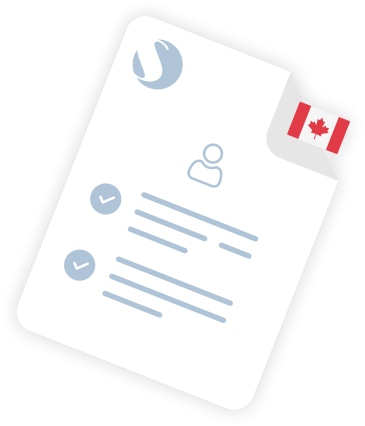Canadian tax preparation
for non-resident self-employed Individuals
Sprintax Canada is the only online self-preparation software
for Canadian non-resident income tax returns
Tax return from $69.95
Get your tax forms securely online

What does Sprintax Canada do for non-resident self-employed individuals?
Non-resident and emigrant tax preparation software
Any income you earn from self-employment in Canada is taxable.
Freelancers fall under the self-employed category. This means that even if you are a non-resident in Canada you may have to file a tax return and pay taxes in Canada if you were self-employed.
Sprintax Canada is the only online tax preparation software for non-resident tax returns.
Sprintax Canada will help you
Prepare your Canadian tax documents easily online
Claim your maximum tax refund
Determine your residency status
How Sprintax Canada tax preparation works
Your Canadian tax preparation in a few simple steps
1
Create an account with Sprintax Canada
2
Answer a few simple questions
3
Sprintax checks deductions and expenses
4
Sprintax prepares the tax form
5
Print forms and send to tax authorities



We are here to help!
Got questions about Canadian tax?
Our Live Chat team is online 24/7 to support you
Frequently asked questions
Yes, when you are operating your own business you need to report self-employment income on your personal income tax return.
It’s important to properly determine your Canadian tax residency status in order to file your tax return correctly.
In short, you are considered a non-resident self-employed individual in Canada if:
- You normally live in another country and are not considered a resident of Canada, or
you do not have significant residential ties in Canada - You lived outside Canada throughout the tax year, or
you stayed in Canada for less than 183 days in the tax year.
In order to report your foreign income as a non-resident, you must fill out a Federal (TD1) tax form.
This form is used to determine your entitlement to personal tax credits in Canada. In short, if you earn 90% of your income for that tax year in Canada, you can claim the credits. In this case, you should tick ‘yes’ on the first page of the form.
However, if you earned more than 10% of your income outside Canada, you are not entitled to the credits, and you should tick ‘no’ on the first page of the form.
You can claim any reasonable expense incurred by the business to reduce your tax liability. Some common examples of business expenses include:
- Legal and accounting fees
- Telephone and utilities bills
- Travel
- Meals and entertainment
- Insurance
- Property taxes
- Motor vehicle expenses
You should keep all receipts and bills for expenses related to your business. You will need to keep these for up to six years.
The tax authorities may ask you for them as proof of your expenses.
The tax filing deadline for self-employed individuals is 15 June.
Late filing may result in penalties and fines from the CRA.
You’ll need to pay the outstanding amount to the tax office before the filing deadline. The annual deadline for paying your taxes is typically the 30 April.
You can pay by check, bank transfer or use your credit or debit card.
You can prepare a payment voucher, and mail it to the CRA with a check, or money order if you choose this payment method.
Sprintax Canada will provide the filled out form for you. You will find detailed information about the method you have chosen in your instructions.